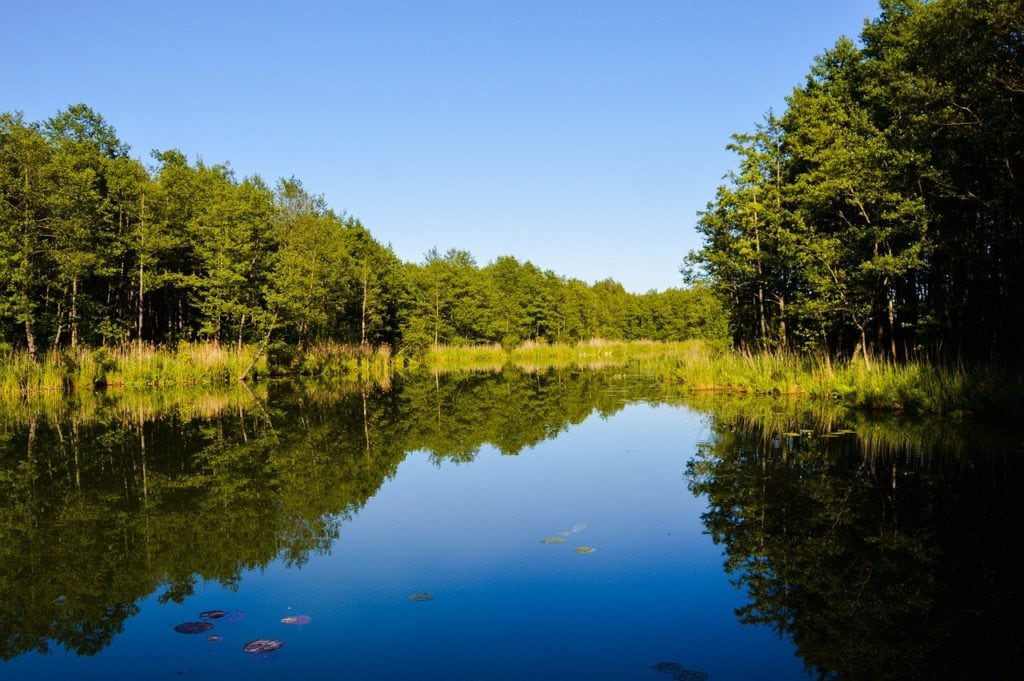Did you know that this Central European country has one of the five European deserts with the desert of Bledow? Or that more than one percent of its territory is protected by national parks? Add to this a dense history that begins as early as the tenth century, which gives clues to the question “Why hiking in Poland?”.

For its historical monuments
Without strong natural borders and surrounded by large neighbours (Germany and Russia in particular), Poland’s history is marked by many conflicts. The country even disappears from the maps for almost a century! From these tumults, an important cultural heritage was born, of which we can cite, among other things:
- The Krakow Historical Centre: Poland’s former capital and cultural centre
- Wieliczka salt mines: the only UNESCO World Heritage Sites
- Warsaw’s Old Town: built around the castle of the Dukes of Mazovia
- On another register: the Auschwitz camp, so as not to reproduce the horrors of the past

For its gastronomy

Polish cuisine is a reflection of its history: rich in influence. However, cabbage and potatoes are important. To quote some typical dishes:
- Bigos: cabbage stew (pictured)
- Pierogi: kind of ravioli stuffed with different ingredients (potato, meat or other)
- Zurek: sour soup with vegetables, bacon and eggs
- Makowiec: cake made from a rolled brioche dough and stuffed with poppy.
For its mountains

Southern Poland concentrates its mountains. Indeed, this is where the Sudetenland and Carpathian massifs are located. In the latter point to the highest peaks of the country. And more precisely, they are located in the Tatras massif which peaks at 2,500 m with the peak of the Rysy. If you’re looking for natural landscapes in a traditional area, this is the place for you!
For the desert of Bledow
Obviously, we don’t talk about the Sahara, and we don’t come to Poland just for it. Nevertheless, deserts are rare enough in Europe to evoke this peculiarity. With an area limited to 32 km2, it still has a sand thickness of nearly 40m. Although it is decreasing, if you are in southern Poland, it may be worth a visit.

If you like water
With more than 500 kilometres of coastline on the Baltic, beaches, dunes and cliffs are on the agenda. In fact, in the middle of summer, the water temperature is close to 20oC. What, to take a pleasant break after a few days of hiking. But that’s not all, Poland is the second country in Europe in terms of number of lakes after Finland. The latter are mainly to the north and south of the country. The founders of the Kingdom of Poland used these natural resources to build lake fortresses.

For its forests and wildlife
With more than 3000 km2 of national park, the trees have something to be preserved. It is undoubtedly this concern for nature that allows Poland to have primary forest such as that of Białowieża. This natural setting allows wildlife to thrive: bears, wolves, lynx, elk…
For its traditions
Poland succeeded in bringing to life the folklore of which Chopin had popularized the dances. This is especially true in the Podhale region, near Zakopane where taverns vibrate to the sound of folk music.

Convinced of why hiking in Poland? Don’t forget to check your visas, vaccines and other… You can check out our list to remember nothing!


